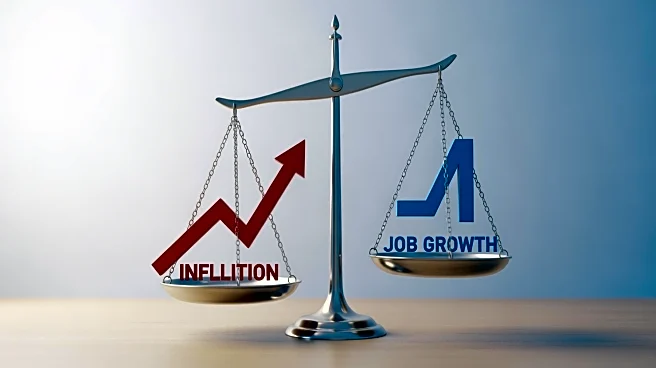What's Happening?
The National Retail Federation (NRF) has forecasted that holiday spending in the United States will reach between $1.01 trillion and $1.02 trillion for the 2025 season, marking the first trillion-dollar
holiday season. This prediction comes despite economic pressures such as tariff-related cost increases, a record-setting federal government shutdown, and signs of a softening labor market. Consumer spending, which constitutes 68% of the U.S. GDP, is expected to drive this growth. NRF President and CEO Matthew Shay highlighted that consumer engagement remains strong, partly due to retailers' efforts to mitigate price increases from tariffs. Other forecasts, such as those from Deloitte and Salesforce, also predict sales increases, although PwC anticipates a 5% decrease in average consumer spending compared to a 7% increase in 2024.
Why It's Important?
This forecast is significant as it underscores the resilience of consumer spending, a critical component of the U.S. economy, even amid economic uncertainties. The anticipated trillion-dollar holiday season reflects the importance of consumer behavior in sustaining economic growth. Retailers' ability to maintain consumer interest despite economic challenges suggests a robust retail sector. However, the cautious approach to holiday hiring, with predictions of hiring between 265,000 to 365,000 seasonal workers compared to 442,000 in 2024, indicates a conservative stance by retailers in managing costs. This hiring trend aligns with broader economic caution, reflecting the smallest seasonal job increase since 2009.
What's Next?
Retailers are likely to continue focusing on strategies to attract price-sensitive consumers, leveraging promotions and value offerings. The NRF's forecast, based on economic modeling and key indicators like consumer spending and inflation, suggests that retailers will need to navigate economic pressures carefully. The reduced hiring forecast indicates that retailers may prioritize efficiency and cost management during the holiday season. As the season progresses, the retail sector's performance will be closely watched as an indicator of broader economic health.
Beyond the Headlines
The forecasted spending highlights a cultural dimension where holiday spending on loved ones remains a priority for consumers, even in challenging economic times. This trend suggests that cultural and emotional factors play a significant role in consumer spending decisions, providing a 'moat' around holiday expenditures. The ongoing importance of holiday celebrations, amplified during the COVID pandemic, continues to influence consumer behavior, potentially offering insights into future spending patterns.













